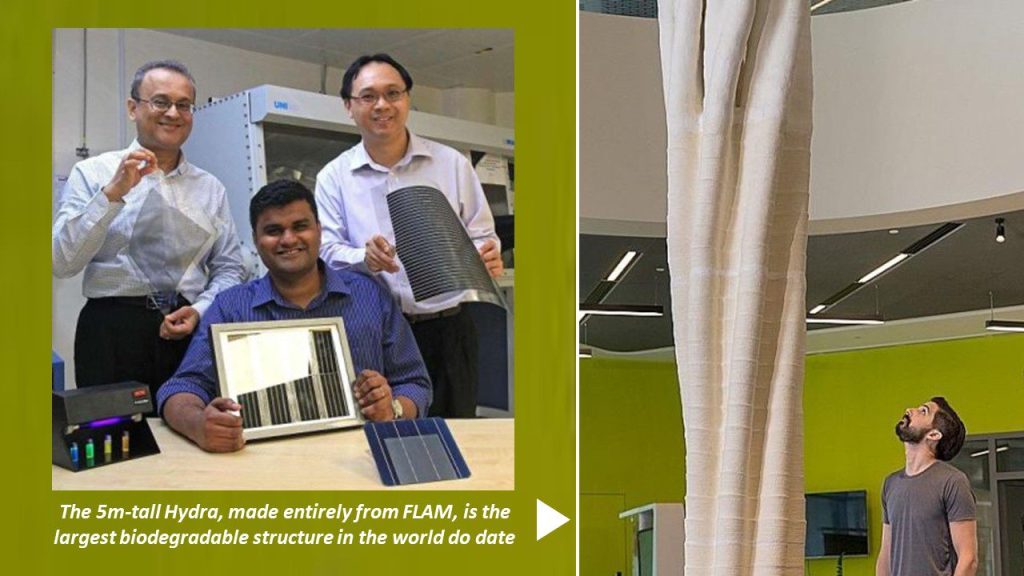Could prawn shells be the new plastic? Plastic is now everywhere and virtual indispensable in our daily lives, but it is polluting the earth. However, its widespread use may one day be replaced by eco-friendly options.
One such material is Flam (fungal-like adhesive material), a fully biodegradable and ecologically sustainable material made from cellulose and chitin – basically, plant matter and prawn shells.
Researchers at the Singapore University of Technology and Design (SUTD) have grown this 3D printable material, which is cheap, tough and lightweight.
Assistant Professor Javier Fernandez, one of the lead researchers of the project, said the successful development of Flam showed that more sustainable ways of production are possible. He added that the use of plastics may one day be reduced drastically, with the development of a potentially cheaper and more sustainable new material.
Flam is made up of an amalgamation of cellulose and chitin, which are the two most common natural polymers and industrial by-products on earth. Cellulose can be extracted from sawdust and other plant-based waste materials, chitin from seafood shells. These materials might otherwise go to waste.
“These materials are part of the ecosystem, so when Flam is disposed of in nature, it will decompose without further intervention,” Prof Fernandez said.
Flam also costs less than $2 a kilogram, similar to commodity plastics.
Source: The Straits Times
To find out more, click https://www.straitstimes.com/singapore/making-new-plastic-from-plants-and-prawn-shells

